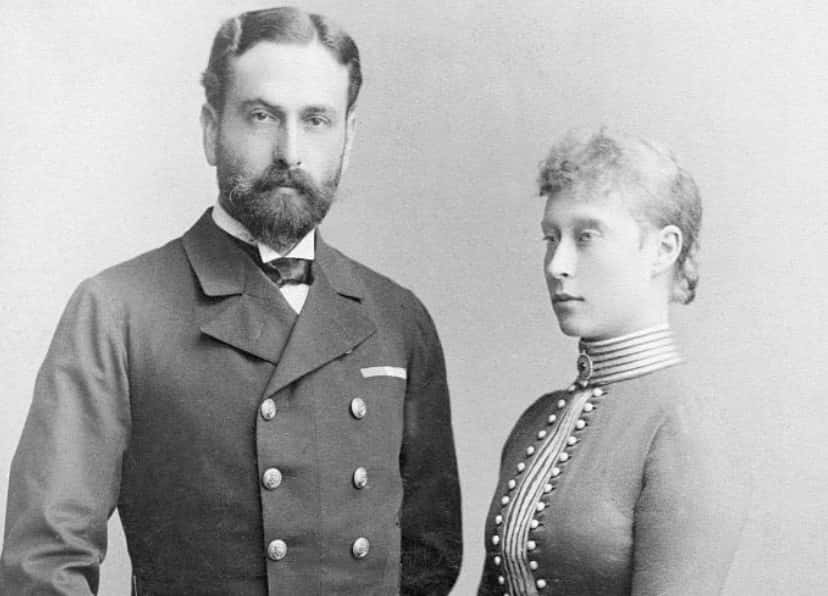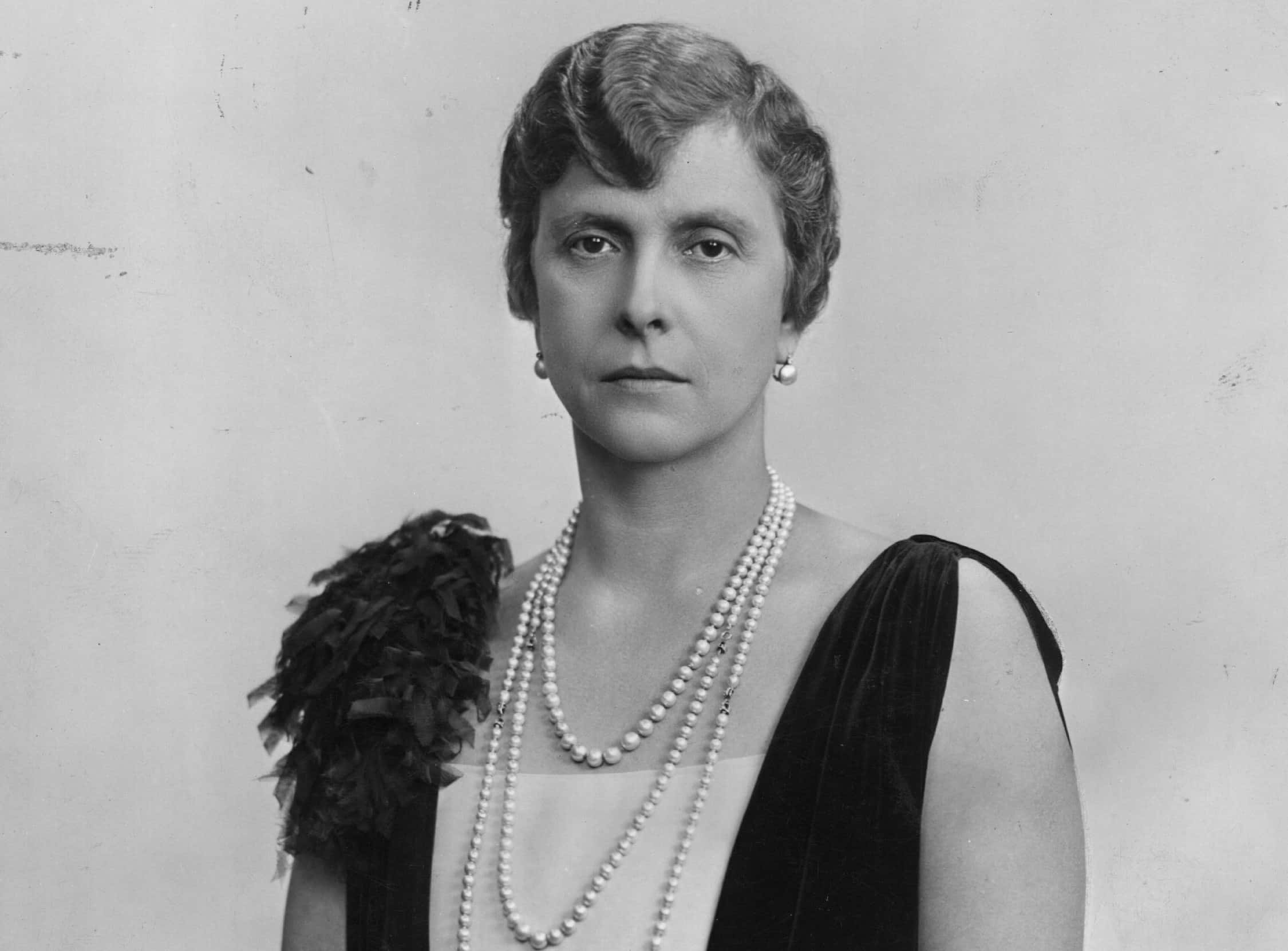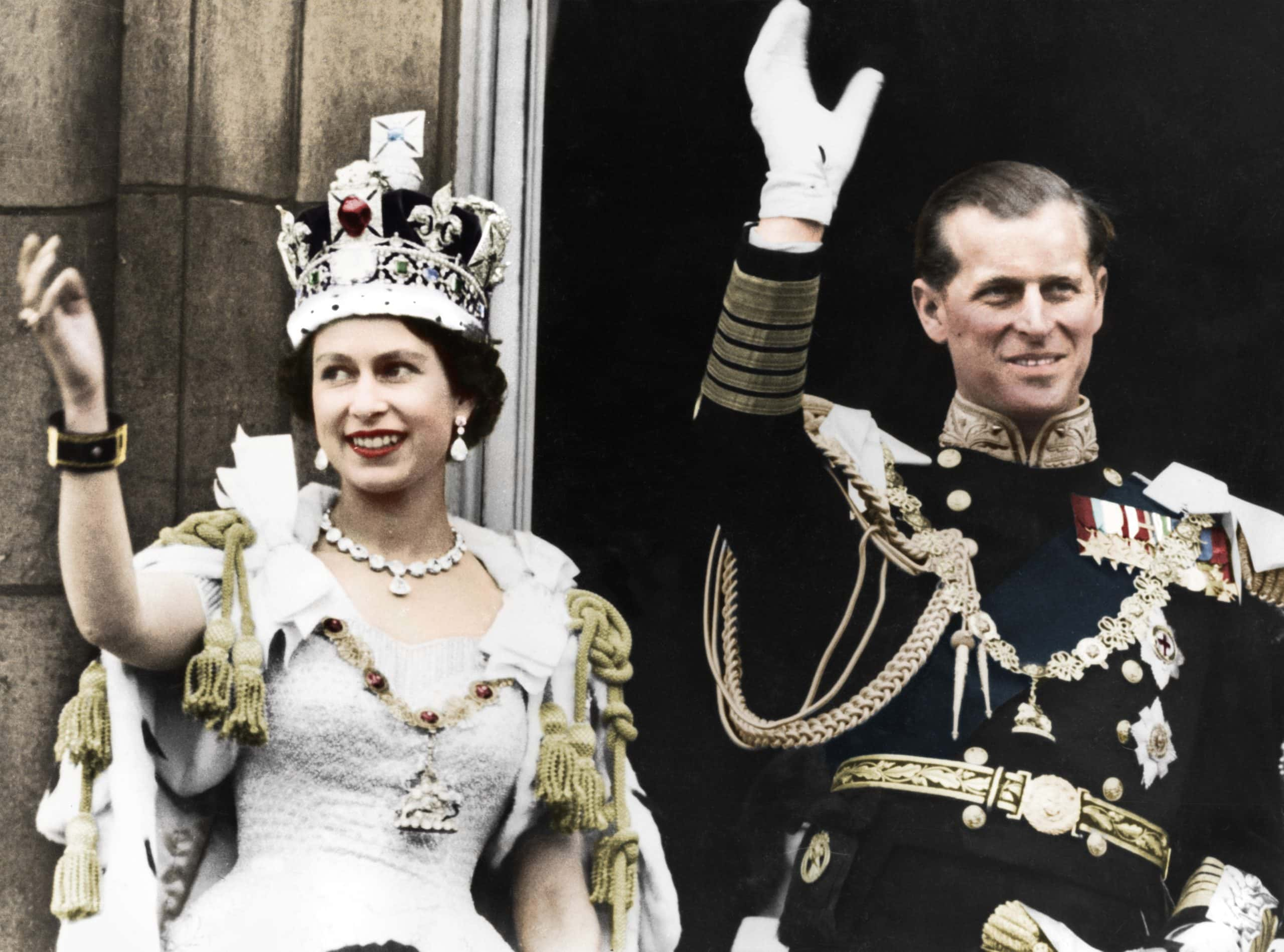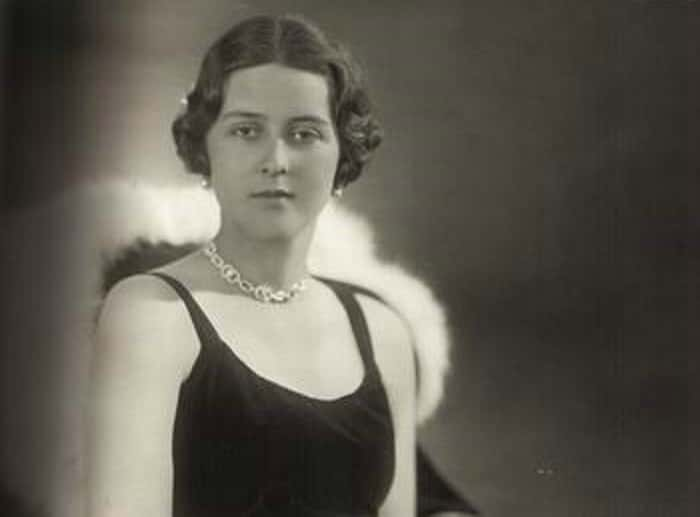The British Royal Family orbits around Princess Alice of Battenberg. Queen Victoria was her great-grandmother and Queen Elizabeth II is her daughter-in-law. But for a woman with such blue blood, Princess Alice's life was no fairy tale. From her heroism during WWII to her abandonment in a mental institution, this forgotten royal is worth a closer look.
1. Queen Victoria Saw Her Birth
Princess Alice was born in Windsor Castle's Tapestry Room—a far cry from the sanatorium she'd eventually find herself in. Her great-grandmother, Queen Victoria, was present for her birth. Princess Alice was low on the totem pole, but her connection to Victoria ensured she'd end up embroiled in Europe's messy game of thrones before long.
And, unfortunately for Alice, the cards were stacked against her.

2. She Was Different
Being a royal comes with a lot of perks, but it also meant Alice's parents dragged her all across Europe when she was a girl, rarely staying in the same place for long. She generally split her time between Darmstadt, London, Jugenheim, and Malta, with countless diplomatic trips sprinkled throughout. Such a hectic childhood would be hard on anyone, and Princess Alice of Battenberg wasn't just anyone.
Alice's mother soon realized something was...different about her.
3. She Struggled To Speak
It all started when little Alice reached the age when her parents expected her to start talking. The weeks and months passed, and yet Alice hadn't yet said a word. They heaved a sigh of relief when she spoke her first words, but soon a new fear surfaced. Alice was talking, but she seriously struggled with pronunciation, far more than physicians considered normal.
Alice's parents were desperate for an answer—but they wouldn't like the one they'd get.
 Wikimedia Commons
Wikimedia Commons
4. She Got A Tough Diagnosis
In the end, it was Alice's paternal grandmother, Princess Julia of Battenberg, who solved the mystery: Princess Alice was deaf. It was a tough pill to swallow, but it was also the first step in the right direction. Alice's mother took a personal interest in her early education, and she was in for a pleasant surprise. Alice was brilliant, and soon she could speak and lip-read in both English and German.
Princess Alice's deafness never held her back. Unfortunately, her family never quite got over the idea that something was "wrong" with her.
5. She Was A Cute Bridesmaid
The British Royal Family was in turmoil during Alice's childhood. Case in point: In the span of a few months, her uncle, Prince Albert Victor, passed on, and his ex-fiancee, Princess Mary of Teck, married Albert's brother, Prince George. But while the wedding was a little...uncomfortable, obviously, at least little Alice looked adorable as Mary's eight-year-old bridesmaid.
Unfortunately, not all of Princess Alice's royal duties were quite so fun...
6. She Saw History As It Happened
Queen Victoria's 63-year reign ended in 1901, and a 16-year Princess Alice attended the funeral. Her great-uncle, Prince Albert, was crowned King Edward VII soon after. Naturally, Alice attended the coronation, likely a long and boring day for her—but at least she had something to keep her distracted. That was the day she met the man who would change her life forever.
7. She Met A Boy
By the turn of the 20th century, every royal family in Europe was one big, tangled mess. It seemed as though every prince and princess in the continent was related to each other. Queen Victoria's nine children and countless grandchildren saw to that. Because of that, royals from all over traveled to London to see their brother/cousin/uncle King Edward VII's coronation.
One of these royals was Prince Andrew of Greece and Denmark. If it wasn't love at first sight, it was close.
8. Her Life Seemed Perfect
Alice and Andrew didn't wait long. The sparks flew in their first meeting and they kept in close contact. Within a year, they were ready to jump in the deep end. They married in 1902 and got to their royal business. They went on to have four daughters, then a boy—the baby of the family. That boy would grow up to be Prince Philip, Duke of Edinburgh and consort to Queen Elizabeth II.
But Alice's time with her boy Philip would be painfully short.
 Wikimedia Commons
Wikimedia Commons
9. She Wanted To Be A Nun
Motherhood wasn't Alice's only passion. On a trip to Russia, she met her cousin Grand Duchess Elizabeth Feodorovna. The Bolsheviks would eventually murder Elizabeth along with the rest of the Romanovs, but during Alice's visit, everything seemed A-OK in Russia. Elizabeth inspired Alice to live a more religious life. She gave away most of her possessions and started preparing for an ascetic, spiritual existence.
Honestly, that would have been preferable to what really awaited Princess Alice.
10. She Lived In A Warzone
Things had started going wrong before WWI. The Greek Liberation movement gained traction, and that was not good news for a royal like Alice. Then WWI broke out, and things went from bad to worse. Though the government supported the Allies, Alice's brother-in-law, King Constantine I, refused to take a side. That's how Alice found herself huddling in the palace cellars with her children as the French bombarded Athens.
As they sat there, the building shaking around them, Alice must have simply prayed for her nightmare to be over. Little did she know, it was only beginning.
11. She Had To Flee
By June of 1917, the Greeks had finally had enough of their king and all his relatives—and that included Alice herself. The democratic government forced King Constantine I to abdicate, then exiled the entire royal family to Switzerland. At least, for Alice, this was some respite from the conflict. It wouldn't last long, though.
12. She Was In Danger
Supporters restored Constantine to the throne in 1920, allowing Alice and her family to return home—but that didn't last long. The Greeks lost the Greco-Turkish War, and in the aftermath, a military coup seized power and exiled the royals yet again. It was a disaster for the monarchy—and Alice was in even more danger than most.
13. She Needed To Escape
The coup meant that there was a target on Prince Andrew's back. Any military officials with ties to the monarchy were apprehended—and who had closer ties than the king's brother? Andrew sat in captivity as several other officers who'd been detained along with him were tried...and then executed. Alice had to wait with bated breath to hear her husband's fate, and her own along with it.
Then, at the final hour, their savior arrived.
14. She Got Out Of Greece
Greece was a viper's den, but Alice still had people in her corner back in England. She was, after all, Queen Victoria's great-granddaughter. The Brits weren't just going to forget about her! They knew that Prince Andrew's family was in grave danger, so they sent a British cruiser, the HMS Calypso, to take them out of Greece.
They ended up settling in Paris, enjoying a quiet life alongside other Greek refugees. It felt like Alice could finally have some peace—but it couldn't last for long.
15. She Started To Change
Though WWI had put Alice's religious ambitions on hold, now that she had free time on her hands, she dove right back into her work. She converted to the Greek Orthodox Church and began plans for a religious order of nurses—the same plan her martyred cousin Elizabeth Feodorovna had outlined all those years ago to her.
However, people couldn't help but notice something was...different about Princess Alice.
16. She Heard Voices
Around this point in her life, Princess Alice started to claim that she was receiving divine messages from spiritual forces. She told people that she was in direct contact with not only Jesus Christ, but also the buddha. Those people close to her grew concerned by her disturbing behavior—and it was going to get worse before it got better.
17. She Was Touched By God
Through her divine messages, Princess Alice became convinced that she had been given healing powers by God. Her family didn't agree. Alice's sudden change in behavior terrified them, and they sent her to several specialists to try and find out what was really happening. They eventually got their answer. Sadly, it sealed Alice's fate.
18. They Said She Was Schizophrenic
Alice's family sent her to the finest psychiatrists in Europe, and they all offered the same diagnosis: Princess Alice was a paranoid schizophrenic. You would hope that getting the answer might be the beginning of Alice's journey to recovery—but mental health was more of an "art" than a science back in those days. Alice's days of royal privilege were officially over.
19. She Ended Up In An Asylum
Following her diagnosis, the royal family could only think of one thing to do with Princess Alice...and it wasn't good. Princess Alice was forcibly removed from her children and tossed in Ludwig Binswanger's sanatorium in Switzerland. This was no Bedlam—some of the world's richest mental patients resided at the sanatorium—but to Alice, it was nothing more than a prison.
20. Freud Studied Her
Princess Alice was royalty, and she was staying in a fairy swanky sanatorium, which meant the greatest minds of the day studied her and tried to understand her condition further. Her doctors sought out Sigmund Freud, the poster boy of psychoanalysis, to help determine what treatment could help Alice. His conclusions were absolutely bizarre.
21. He Diagnosed Her
Surprise surprise, Sigmund Freud believed that Princess Alice's hallucinations were caused by sensual frustration—which was pretty much the same diagnosis he gave to most his patients. He didn't just stop at diagnosing the cause of her illness, though. He had a treatment in mind, too. The only problem was, it was completely deranged.
22. He Had A Bizarre "Treatment"
Sigmund Freud recommended that Princess Alice's regular doctors at the sanatorium should X-ray her ovaries. Why? To dampen her libido, of course, and thus "fix" the "problem". Spoiler alert: It didn't work. Meanwhile, the days kept ticking by, and Alice remained trapped against her will. Soon, her plight became truly heartbreaking.
23. She Wanted Out
The entire time that Princess Alice remained locked up in the sanatorium, she insisted that she was sane and begged to be let free. She even tried to escape several times, only for guards to bring her right back. There was nothing she could do but listen to the doctors and hope they might one day let her walk free again. That day did eventually come—but the damage had already been done.
24. Her Family Moved On
Getting thrown in a sanatorium is bad enough, but for Princess Alice, that was just the half of it. While she remained hidden away, her family went on with their lives without her. She grew more and more distant from her husband. Her daughters all married German princes, while her son, Prince Philip, went to Britain to stay with Alice's brothers.
By the time Alice got out, her life had already passed her by.
25. She Cut Them Off
Princess Alice stayed locked up in the sanatorium for two years, despite her many pleas for freedom. When she finally left, she simply wanted to be left alone at last. Although she wrote to her mother, she refused contact with anyone else in her family. They had betrayed her once, and they wouldn't gain her trust again that easily.
Alice lived a simple, obscure life in Central Europe for the years following her stay in the asylum—but soon, her entire life would be thrown upside down once again.
26. She Stayed In Greece
Princess Alice wanted to be left alone, but WWII made her simple life impossible. Despite her distance from her husband (she had barely seen him in a decade), she still wanted to be with her people. She spent the duration of the conflict living in Athens while the rest of the Greek royal family fled the country for South Africa.
But Alice didn't simply cower behind palace walls. She was ready to work.
27. She Helped However She Could
After years in a small, humble flat, Alice moved to the former royal palace in the middle of the city. From there, she set up a base of operations with the Red Cross, providing relief to the people of the city. She organized soup kitchens, and even snuck medical supplies into the country from Sweden under the guise of a visit to her sister, Louise.
Princess Alice worked tirelessly to help the people of Athens. However, her work only got harder as WWII raged on.
28. She Couldn't Save Them
After Mussolini's fall in 1943, the Axis forces occupied Athens. It was an extremely dark time, and not just for Princess Alice. During that period, the Germans sent about 60,000 Greek Jews to concentration camps, where all but 2,000 of them perished. There was only so much Alice could do to protect her people—but she did what she could.
29. The Germans Took The City
When German forces entered Athens, they assumed that Alice had stayed behind because she supported the Axis cause. After all, two of her daughters were married to Germans. Thus, they treated her with respect. A German general personally paid her a visit and asked her if there was anything he could do for her. I doubt he expected her defiant response.
30. She Held Her Head High
Despite her German sons-in-law, Princess Alice was staunchly against the Germans. So, when the general asked what he could do for her, she looked him in the eye and barked, "You can take your troops out of my country". That is just the kind of woman that Princess Alice was. And, if her demand wasn't courageous enough, she was also hiding a secret—one that would mean certain death if it got out.
31. She Had A Secret
Years earlier, in 1913, a Jewish man named Haimaki Cohen aided the King of Greece. In return, the King promised that if he ever needed help, the monarchy would be there for him. Well, by 1943, the king was long gone, but Cohen's son still remembered the promise. With no other options, he ventured to the palace where he appealed to Princess Alice.
Alice didn't personally owe this man anything, but he needed her help, and she wasn't going to turn him away.
32. She Sheltered A Jewish Family
Princess Alice took in the Cohen family and hid them from the Germans for the rest of WWII. She couldn't save the 60,000 Jews whom the Germans expelled, but she could at least do this. Later, Israel's Holocaust memorial institution would declare her "Righteous Among Nations" for her efforts. She remained in Athens, with the Cohens, until 1944, when the Allies liberated the city.
However, because this poor woman must have been cursed, Alice's problems were far from over.
33. The Fighting Continued
The liberation of Athens didn't free the city from conflict. Though Axis forces fled, the fighting continued, as Communist guerrillas tried to wrest control of the capital from the British. If anything, the city grew even more dangerous, as the streets became a battleground for the struggle. But Princess Alice had served her city through years of warfare—she wasn't going to stop now.
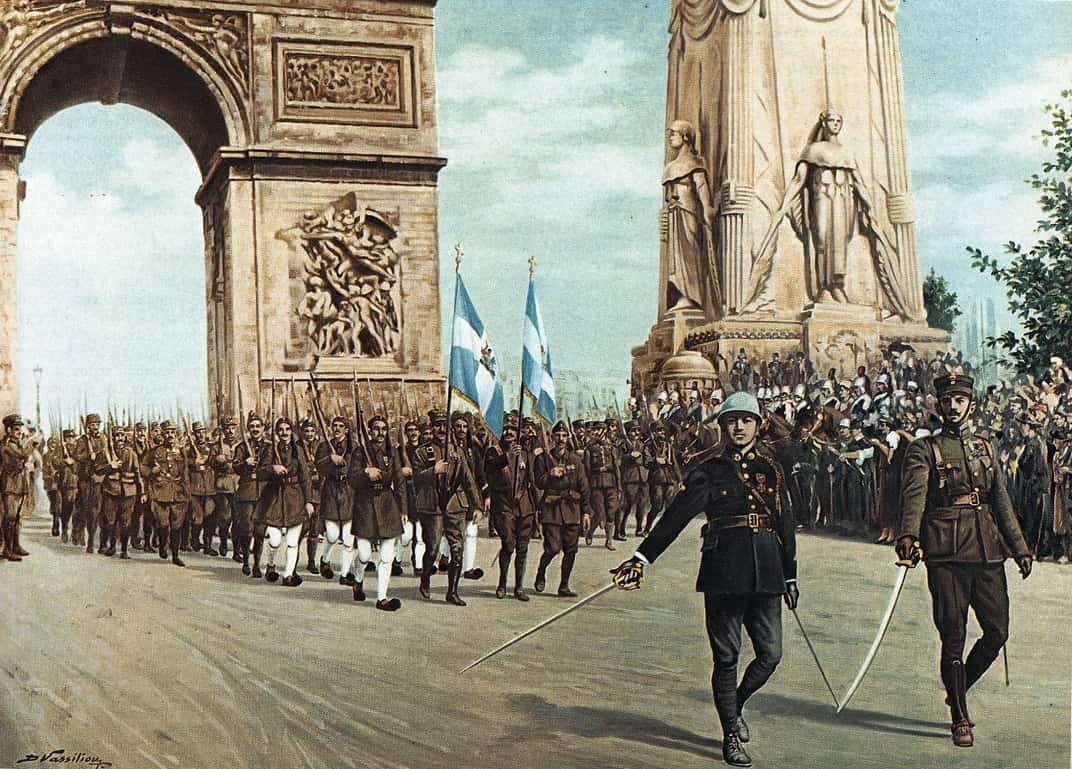 Wikimedia Commons
Wikimedia Commons
34. She Showed Great Bravery
British forces begged Princess Alice to remain in shelter, but they didn't know who they were dealing with. She openly walked the streets of the city, distributing rations to children. One man tried to warn her that a stray bullet could strike her at any minute. Her reply was characteristically witty: "They tell me that you don't hear the shot that kills you, and in any case I am deaf. So, why worry about that?"
35. Her Son Found A Winner
Princess Alice didn't leave Athens until 1947—but this time, she had a pretty good reason to exit. Her son Philip was finally getting married, and Alice just had to meet the blushing bride he had chosen. So, who was the lucky lady Philip managed to tie down? Oh right, you knew that already: It was the future Queen Elizabeth II.
36. She Gave What She Could
Traveling to England must have been a strange experience for Alice. She had spent years living in squalor in war-torn Athens. She had few possessions remaining, as she had given most of them away to those in need. However, she did still have some jewels remaining from her more glamorous days. In fact, you can still see these jewels today: They're usually on Queen Elizabeth's finger.
Alice didn't have much to offer her new daughter-in-law, but she had some of her jewels used to make Elizabeth's engagement ring.
37. She Sat With The King
Life can change fast. One day, Princess Alice was living off of meager war rations in Athens. Just a few short years later, she sat at a British royal wedding, across from the King of England himself. She had come a long way from begging for her freedom in a sanatorium. And now that WWII was actually behind her, she could finally start living her life again. So, what was she going to do?
38. She Founded A Convent
Princess Alice never forgot about her meeting with her aunt, Elizabeth Feodorovna, who spoke of founding a nursing order of nuns. Though Elizabeth lost her life in the Bolshevik Revolution, Alice kept her spirit alive by realizing her dream. She founded the Christian Sisterhood of Martha and Mary. Her mother couldn't believe it of her own daughter, exclaiming, "What can you say of a nun who smokes and plays canasta?"
Don't say anything I guess?
39. She Stood Out
You couldn't miss Princess Alice at her daughter-in-law's coronation. In one of the most extravagant, gilded ceremonies in the world, Alice stood in a simple grey dress and wimple, like a nun's habit. After the coronation, she returned to Greece. Though almost none of her family remained there and the monarchy was in tatters, Greece was her home. Until it wasn't.
40. She Had To Flee Greece Once More
Though Alice preferred to remain in Greece, the 1967 Colonels' Coup made it too dangerous to do so. She was a hero, she had royal blood, but the military dictatorship was a threat. Queen Elizabeth and Prince Philip invited her to live with them at Buckingham Palace. However, while she made it out of Greece, she didn't have much time left.
41. She Was Lucid Until The End
At this point, people in England whispered that Prince Philip's mother had gone utterly senile—but that was mostly because of her appearance and her humble clothing. Though incredibly frail and even deafer than ever before, Alice remained lucid until her final days. She finally passed on December 5, 1969, in Buckingham Palace.
42. She Left Nothing Behind
You would think that, being a royal and all, Princess Alice would have left a handsome will behind. In reality, she left no possessions at all when she passed. Charitable to a fault, she had long since given everything away.
43. She Wanted To Be Alone
After they sent her to a sanatorium, Princess Alice scarcely saw anyone from her family for the rest of her life. For the first several years after she got out, in fact, she had absolutely no contact with them at all. Maybe she would have carried on like that for the rest of her life. Then a tragedy forced her to change her plans.
44. She Lost Her Daughter
In 1937, Princess Alice received devastating news: Her daughter Cecilie, her son-in-law, and two of her grandchildren lost their lives in an air accident that shocked the world and the royal family. She hadn't seen Cecilie in years, but the loss still hit her hard. It took Cecilie's funeral to get Alice to finally see her family again.
45. She Finally Saw Them Again
Alice saw her husband, Prince Andrew, and son, Prince Philip for the first time in six years at their daughter's funeral. Philip had been a boy when she'd seen him last, and now he was a strapping 16-year-old. I suppose time heals all wounds, because after their tearful reunion, Alice finally resumed contact with her family—though it was far too late to save her crumbling marriage.
46. She Didn't Get Over It
Apparently, sending her to an insane asylum just wasn't the kind of thing Princess Alice would get over. Though she saw her husband at the funeral, the reunion was brief. Alice returned to Athens to work with the poor, despite the fact that Andrew was still banned from the country. Then WWII broke out, and five more years passed with the couple not seeing one another.
Finally, after the liberation of Athens, it seemed like the time might finally be right for them to get back together. Of course, that's when tragedy struck again.
47. She Lost Her Husband
Before they could figure out how to have a reunion—or if Princess Alice even wanted a reunion between the two of them—Prince Andrew succumbed to heart failure in Monaco. He had barely seen Alice a handful of times since he sent her off to the sanatorium in 1930. The last time they'd met had been in 1939, five years before his passing.
48. She Lived In Squalor
Alice chose to stay in Athens to help the poor rather than go be with her husband, but doing so was no walk in the park. As WWII went on, conditions in the city grew worse and worse. Though Alice's privilege protected her from the worst for a while, eventually, she ended up in the muck with everyone else. When the Allies liberated the city, a British statesman tracked her down.
He couldn't believe his eyes when he found her. Here was Princess Alice, great-granddaughter to Queen Victoria herself, living in utter squalor.
49. She Ran Out Of Food
Alice later revealed to her son just how desperate the final days of Germany's occupation had been. She went months without meat of any kind, and by the time the British arrived, she had been living on nothing but bread and butter for weeks. The liberation came just in time, because only a little while longer and Alice might not have made it.
50. She Didn't Think She Was Special
Princess Alice's final wish was to be interred in Jerusalem, at the Church of Mary Magdalene on the Mount of Olives. In 1988, she got her wish, and her remains were moved from Windsor Castle to the Holy Land. Later, Prince Philip visited the city when Yad Vesham declared her Righteous Among Nations.
Of his mother, Philip said: "I suspect that it never occurred to her that her action was in any way special. She was a person with a deep religious faith, and she would have considered it to be a perfectly natural human reaction to fellow beings in distress".

